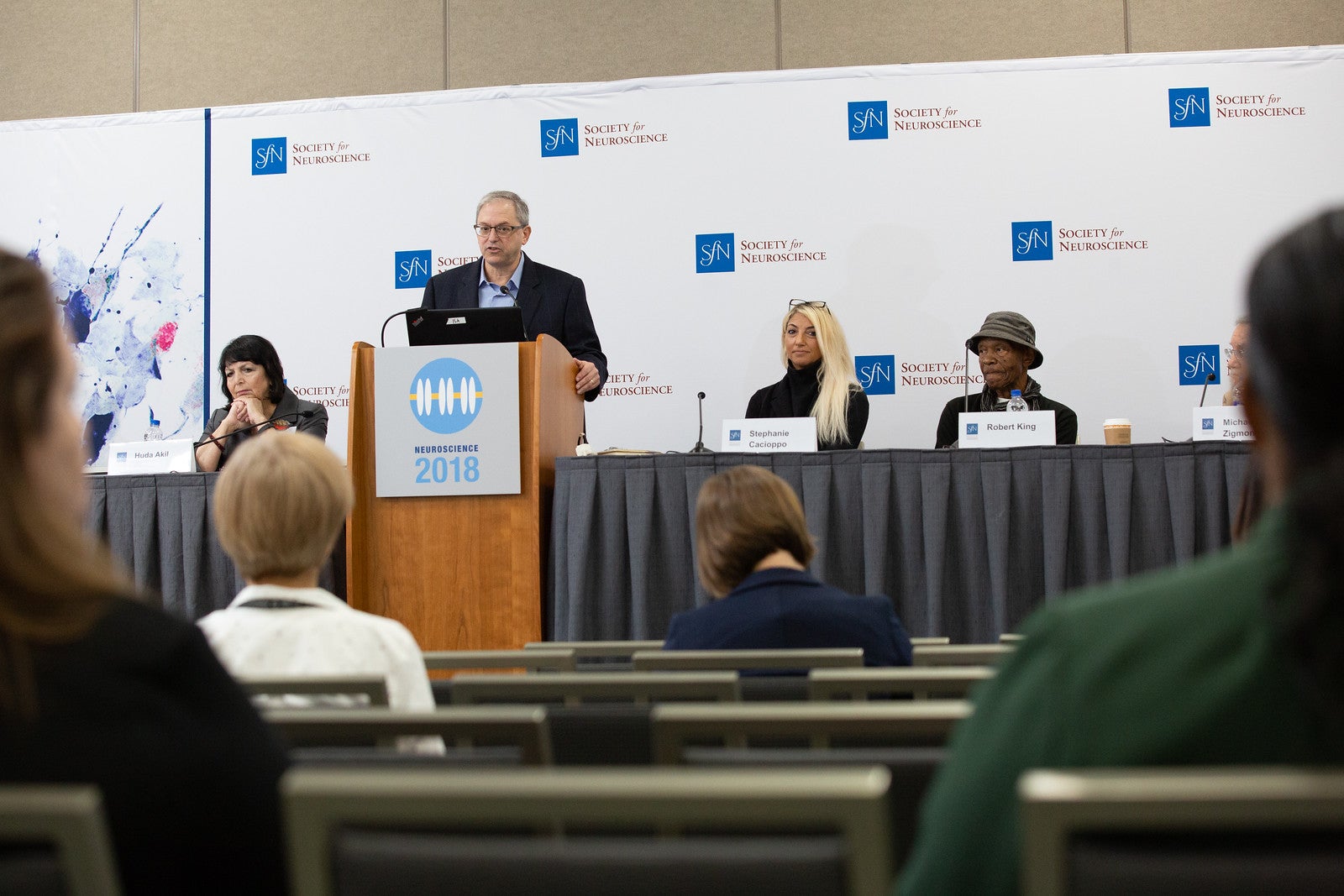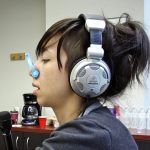How extreme isolation affects the brain
New research on solitary confinement could bridge the mind-body gap when it comes to cruel and unusual punishment.
Listen 11:44
Extended stays in solitary confinement may cause neurons in the brain to shrink by 20 percent, according to new research. (f8grapher/Bigstock)
On a Sunday morning last November, Robert King — best known as one of the long-imprisoned Angola Three — stood before an audience of neuroscientists and reflected on his 29 years in solitary confinement.
“It’s devastating,” he said. “It has impact upon you, and the impact is lasting.”
It’s been almost 20 years since King was released from prison after a court overturned his conviction in the death of a fellow inmate. But even now, King said, he has lingering problems with his vision, his memory, and even navigating open spaces.
King recounted his experience at a roundtable talk at the Society for Neuroscience’s 2018 conference. It was there in San Diego, in front of a packed lecture hall, that King, along with five other experts, weighed in on how extreme isolation affects the brain.

For years, researchers have been documenting the psychological effects of solitary confinement, which include anxiety, depression, even psychosis. But it’s only recently that researchers have begun to explore the neurological effects, which reveal what’s happening in the brain on a physical level.
It’s important work, specifically for opponents of solitary confinement, whose court challenges of the practice have repeatedly stumbled over the legal definition of “cruel and unusual punishment.” The research is in its infancy, but it’s already started finding success in the courtroom — if not always in the wider world.
“We’ve had a very difficult time convincing funding agencies to provide us with the money,” said Michael Zigmond, who organized and moderated the November roundtable. “We’ve probably been trying this for about four years, and we have not been at all successful.”
Zigmond is a neurology researcher and professor; he spent nearly 50 years at the University of Pittsburgh before his recent retirement. His career was largely defined by his work on Parkinson’s disease, but about four years ago, Zigmond changed course and began to focus on isolation.
It was, in some ways, an organic extension of the research Zigmond had been doing before, which included a focus on the role of environmental enrichment — including social interaction and mental stimulation — on brain function and resiliency.
“People knew that the brain’s neural circuitry was enhanced in a variety of ways by environmental enrichment,” Zigmond said. “So it was essentially a linguistic switch to say, ‘Well if environmental enrichment enhances the brain, that must mean that isolation impairs the brain.”
“Look, there are people in prisons right now who need to be — or the prison system needs to be — told what the consequences of this isolation are.”
-Michael Zigmond
That switch was prompted six or seven years ago by one of Zigmond’s colleagues at the University of Pittsburgh, law professor Jules Lobel.
Lobel had recently taken on what would prove to be a major court case involving solitary confinement — a class-action lawsuit against the state of California by inmates of Pelican Bay, a supermax prison where hundreds claimed to have spent years, even decades, in solitary.
He intended to prove that years in solitary constituted cruel and unusual punishment — but there was a problem. Both federal law and the courts maintain that the harm done must be physical, not merely psychological, to constitute a violation of a prisoner’s rights under the Eighth Amendment.
“In American law, it often is that psychological problems are not given the same weight as physical problems,” Lobel said. “So that led both me and some of my clients to say, ‘Why don’t we try to approach this from a neuroscience perspective? Namely, what’s the effect of this on a physical organ, namely the brain?’”
Lobel enlisted a group of neuroscientists to serve as expert witnesses. Though there was no existing research on how solitary confinement affects the brain, they were able to draw on their knowledge of the brain to establish the importance of social interaction to human well-being, as well as the harm that can result when such interaction is taken away.
To his knowledge, Lobel said, it was the first time neuroscience had been used in a solitary-confinement case. The tack seemed to work: California ultimately settled the lawsuit, in the process releasing thousands of inmates from their extended stays in solitary.
But the case also highlighted a gap in the research — which appealed to Michael Zigmond. For years, he’d been studying the effects of environmental enrichment on the brain. What this and potential future court cases demanded was the opposite — a study of the effects of isolation on the brain.
To that end, Zigmond enlisted the help of Richard Smeyne, a neuroscientist at Jefferson University, who, like Zigmond, had spent years studying the effects of Parkinson’s and environmental enrichment on the brain.
“I had no interest in this,” Smeyne said, adding that he often calls Zigmond his “social conscience.”
“His passion really brought me into this, and now we’re spending a lot of time doing this,” Smeyne said.
Funders have been slower to come around, for a variety of reasons. Organizations in the legal sector have criticized their research for relying on mice — which, Zigmond and Smeyne said, is a necessity, given the ethical problems with testing extreme isolation on humans … or extracting their brains for the purpose of analysis.
“I’ve essentially been told, ‘We’re not interested,’ ” said Zigmond. “ `What you’re doing is totally irrelevant to the conditions of solitary confinement. You’re studying laboratory animals, we’re talking about humans. There’s no connection.’”
Research organizations, such as the National Institutes of Health, also have rejected their proposals.
“Their attitude is, the questions you’re trying to address are too simplistic,” Zigmond said. “And our response is, look, there are people in prisons right now who need to be — or the prison system needs to be — told what the consequences of this isolation are in terms of the anatomical and biochemical changes that we’re studying.”
Their research has four fundamental questions:
- In what ways does isolation affect the brain?
- How long does it take for those changes to manifest?
- Does age affect the severity of those effects?
- Can they be reversed?
“If we put someone into prison and we took off 20 percent of their arm, and said, ‘That’s just a natural consequence of you having to be there,’ people would be outraged.”
-Richard Smeyne
Two years ago, Zigmond and Smeyne began working on experiments designed to answer the first two questions. They began by raising several generations of mice in what they called enriched environments — cages filled with other mice for them to interact with, as well as toys and other forms of mental stimulation. Then, they moved a portion of the mice into smaller cages by themselves, with no other mice, and no toys or puzzles. Finally, after one to three months, they sacrificed both the isolated mice and the mice that had remained in the enriched environment and compared their brains — specifically, their neurons.
Smeyne and one of his Ph.D. students analyzed these neurons one by one — a painstaking process they managed to finish only right before the Society for Neuroscience’s annual meeting. It was there that Smeyne announced their findings: that in the sensory and motor parts of the mice’s brains, their neurons had shrunk by 20 percent after one month of isolation, and by 25 percent after three months.
Smeyne said the finding is significant because it shows that solitary confinement causes actual, physical damage, which both the law and courts privilege over psychological damage.
“If we put someone into prison and we took off 20 percent of their arm, and said, ‘That’s just a natural consequence of you having to be there,’ people would be outraged and say, ‘You can’t do that! That’s, that’s torture!’ ” said Smeyne. “But if we are putting people into this situation and their neurons, which are a structural part of the brain, are shrinking 20 percent — you can’t see that from the outside, but you are actually causing a physical defect.”
The shrinkage is also significant because it compromises the neurons’ ability to function effectively.
“The neuron is the … cell in the brain that basically communicates information,” Smeyne said. “So if a cell is smaller, it has less possibilities of interacting with its neighbors.”
Changes like these, Smeyne said, could account for the types of long-term symptoms experienced by Robert King and other people who have spent extended periods in solitary confinement.
The next step in the research is figuring out whether these changes can be reversed.
“Are we causing a permanent change to these neurons, or are they capable of going back to normalcy?” Smeyne asked. “I hope so — I hope that we are not causing a permanent [change]. Because I think if that were the case, I would consider what we were doing to be physical torture.”
WHYY is your source for fact-based, in-depth journalism and information. As a nonprofit organization, we rely on financial support from readers like you. Please give today.







